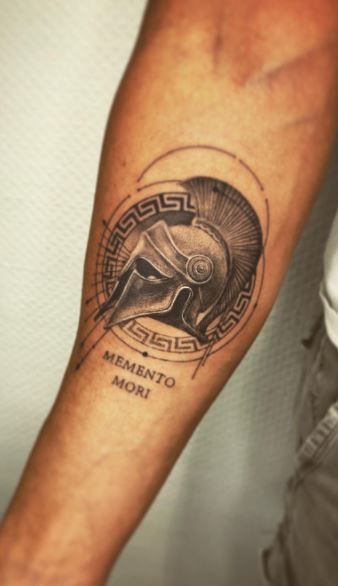











Memento Mori Tattoo: In the world of body art, tattoos usually beat mere aesthetic expressions, becoming powerful symbols that hold deep personal meanings. One such deep and thought-provoking tattoo design is the Memento Mori tattoo. Embedded in a centuries-old tradition, Memento Mori tattoos act as a poignant reminder of life’s transience and the inevitability of mortality. In this article, we will talk about the rich history, symbolism, and growing popularity of Memento Mori tattoos.
Also See:
Historical Roots of Memento Mori
The phrase “Memento Mori” translates to “Remember that you must die.” This philosophical concept acquired popularity during the medieval period and the Renaissance. Artists, writers, and philosophers included this theme in different forms of art and literature as a way to motivate people to reflect on the fleeting nature of life. Memento Mori art usually featured symbols such as skulls, hourglasses, and other morbid imagery.
The symbolism of Memento Mori Tattoos
Skulls and Skeletons: The skull is a central motif in Memento Mori tattoos, representing the universal symbol of death. These tattoos facilitate people to face their mortality and welcome the transience of life.
Hourglasses and Clocks: Another common feature is the hourglass or clock, highlighting the passage of time. This symbol acts as a reminder that time is a limited resource and should be respected and used wisely.
Candles: A melting candle in Memento Mori tattoos symbolize the briefness of life. Once lit, a candle burns for only a limited time, similar to the fleeting nature of our reality.
Quotes and Script: Some Memento Mori tattoos include quotes or scripts that reinforce the theme of mortality. Phrases like “Memento Mori” or “Carpe Diem” (Seize the Day) serve as reminders to live purposefully in the present.
Floral Elements: While skulls and morbid symbols overlook Memento Mori tattoos, some designs ease the imagery with flowers. This juxtaposition indicates the cycle of life, death, and rebirth.
Personalized Meanings
Memento Mori tattoos are highly personal, and people usually infuse them with their outstanding interpretations and experiences. Some may get these tattoos as a reaction to a near-death experience, as a homage to a loved one, or as a day-to-day reminder to enjoy life completely.
Modern Interpretations and Popularity
In recent years, Memento Mori tattoos have undergone a resurgence in popularity. Beyond their historical and philosophical roots, people are drawn to these tattoos as a way to reclaim control over their fears and anxieties surrounding mortality. In a society that constantly avoids conversations about death, these tattoos act as a visual disclosure of an inevitable aspect of the human experience.
Tattoo artists worldwide have welcomed the challenge of creating complex and meaningful Memento Mori designs, combining traditional symbolism with modern aesthetics. Social media platforms showcase an array of these tattoos, each telling a unique story and contributing to a broader cultural conversation about life, death, and the purpose of meaning.
At The End
Memento Mori tattoos are not just ink on skin; they are deep reflections on the nature of existence. These tattoos invite contemplation, encouraging people to live authentically, appreciate the present, and get the impermanence of life. In a world that often motivates us to focus on the future, Memento Mori tattoos provide a tangible reminder to cherish the moments we have, for in the end, they make up the tapestry of our lives.







